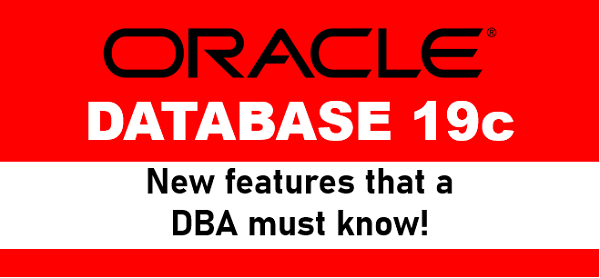Oracle Database 19c New Features: What DBAs Need to Know?
Oracle Database 19c, part of the Oracle 12c family, offers several new features that bring enhanced performance, security, and ease of use for Oracle DBAs. Understanding these features is crucial for DBAs who want to keep their systems running optimally while also taking advantage of Oracle’s latest offerings. In this article, we will explore some of the most important new features in Oracle 19c, including real-time scenarios and practical insights that can be applied in large enterprise environments.
1. Automatic Indexing
One of the most talked-about features in Oracle 19c is Automatic Indexing. This feature helps in automatically creating, optimizing, and dropping indexes based on workload patterns. For DBAs managing large databases with complex queries, this can significantly reduce time spent on manual indexing tasks while improving query performance.
Example:
A large MNC like TCS implemented Automatic Indexing in their production systems to handle a massive increase in query workloads during peak hours. The database automatically created and maintained indexes, resulting in a 25% reduction in query times and freeing up DBAs to focus on other critical tasks.
2. JSON Data Type Support
Oracle 19c introduces native JSON Data Type Support, allowing the database to store JSON data directly. This simplifies JSON handling and improves performance by reducing storage requirements and query processing times.
Practical Scenario:
In a global tech company like Infosys, where applications interact with data stored in JSON format, this new feature reduces the complexity of managing JSON data within Oracle databases. The DBAs at Infosys saw improved performance when accessing and querying JSON data, which significantly boosted application performance.
3. Hybrid Partitioned Tables
Hybrid Partitioned Tables is another feature that allows DBAs to store part of a table in the database and the rest in external locations such as file systems or cloud storage. This is particularly useful for archiving data that is rarely accessed but still needs to be maintained for compliance purposes.
Real-World Use:
HCL Technologies used Hybrid Partitioned Tables to archive old transaction data to an external cloud service while keeping the frequently accessed data within their Oracle Database. This reduced storage costs by 40% and improved performance for active data queries.
4. Data Guard Automatic Role Transition
Oracle 19c introduces enhancements to Data Guard, including automatic role transitions between primary and standby databases in case of failure. This reduces the downtime during failovers, making it easier for DBAs to maintain high availability.
Example:
When Wipro faced an unexpected failure in their primary database, Data Guard’s automatic role transition quickly switched the role to the standby database, ensuring minimal disruption to business-critical applications and reducing recovery time.
5. Quarantine for Problematic Queries
Oracle 19c allows DBAs to identify and quarantine problematic SQL queries that cause performance issues. This prevents the same query from affecting the system repeatedly, giving DBAs more control over resource management.
Practical Impact:
For a banking institution like HDFC Bank, the ability to quarantine resource-intensive queries helps prevent sudden system slowdowns, ensuring smoother operation of critical banking services during peak hours.
Conclusion
At Learnomate Technologies Pvt Ltd, we provide the best-in-class training for Oracle Database, including hands-on experience with all the latest features of Oracle Database 19c. Our expert-led courses will help you master these new tools, enhance your performance tuning skills, and prepare you for real-world scenarios.
For deeper insights into Oracle DBA and other technologies, make sure to visit our YouTube channel at www.youtube.com/@learnomate, where we regularly share educational videos. You can also explore our website www.learnomate.org for more details on our training programs.
Don’t forget to follow my LinkedIn account for more updates on Oracle DBA and career guidance: https://www.linkedin.com/in/ankushthavali/.
If you’re interested in reading more about different technologies, check out our blog page here, where we publish articles on trending topics in IT and beyond.

